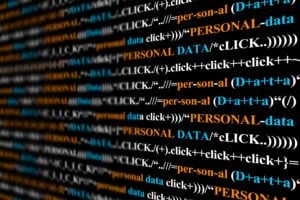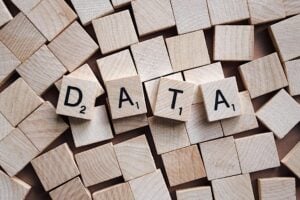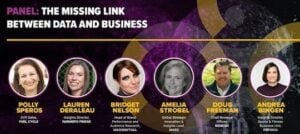A significant change in decision making has occurred with the ability to create endless amounts of data combined with the capability to compute that data. Rather than analyses being reflectively descriptive, decisions can now occur in progressively predictive or even prescriptive ways.
The Old Way:
The consumer travels to the grocery store, puts the carton of milk into the cart, takes the cart to check out, and the clerk scans the UPC code. The retailer and manufacturer of the goods then take the limited data involved in that purchase and (otherwise blindly) forecast what happens next.
The New Way:
The consumer adds goods to multiple carts within Instacart (or another multi-grocer procurement engine). Whether or not items are purchased, retailers and manufacturers receive rich data sets which are added to additional synthetic and external rich data sets to inform complex machine learning algorithms that output artificial intelligence for organizations to accurately predict how much to manufacture, how to better market current products and what products to launch next.
The new way might sound terrifying to someone who only thinks of artificial intelligence when reviewing plotlines of dystopian books and films. But for a data scientist, it’s about job security. The new way means that if an organization knows how to orchestrate data, it can know what’s happening in real time and accurately predict the future (ensuing pun intended).
MADS Board Member, Michelle Ballen, Head of Analytics, Future doesn’t work for a food company, she works for a fitness company. Or does she? When asked if she works for a fitness company or a data company, she says, “both.” She adds that the organization is “primarily a fitness company but that there is a big data component.”
The mission of the organization is to “empower people to live healthier lives,” (so the company actually could be considered food-industry adjacent) and they “use data to get [them] there.” Ballen thus outlines the call for any 21st century enterprise. Employ data to accomplish the mission.
But any organization at the onset of the industrial revolution was employing data to accomplish a mission. The key differences within organizations today are the boundless volumes of data combined with how many people within the organization use that data.
If everyone at the organization can use data to help accomplish the mission of that organization, the organization must transform to both a data mindset and a data culture.
As the Head of Analytics, Ballen is quick to point out that the first step of establishing that data culture is for the data organization to “empathize with business leads.” The perspective being that the onus is on the data organization to “understand the challenges of the domain leads.”
For if the business feels heard and can see the results of interaction with the data organization in metrics that matter to them, hearts and minds will be won. Ballen will continue this conversation at MADS. Join us.
Ballen did bring up three other points in the conversation. The first centered around the fact that data science would benefit- along with the organization- from keeping it simple. “Sometimes practical data work is enough.” Watch this space for more context on that concept.
The second point from Ballen was to complete the benchmarking survey that she helped create. And third, to join her at MADS where she’ll be sharing insight from the resulting Report which will be released onsite in San Antonio.
Contributors
-

Seth Adler heads up All Things Insights & All Things Innovation. He has spent his career bringing people together around content. He has a dynamic background producing events, podcasts, video, and the written word.
View all posts -








































































































